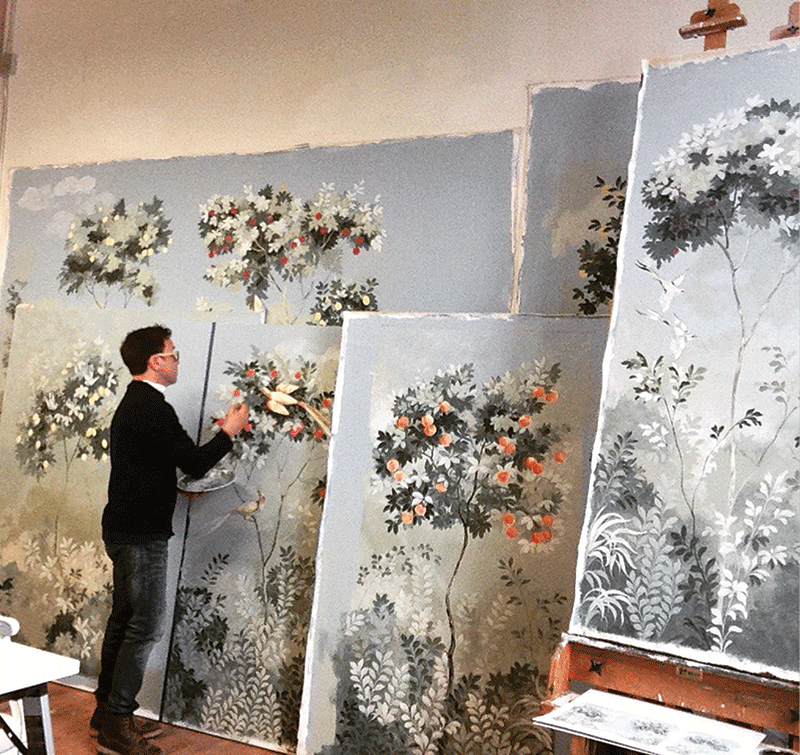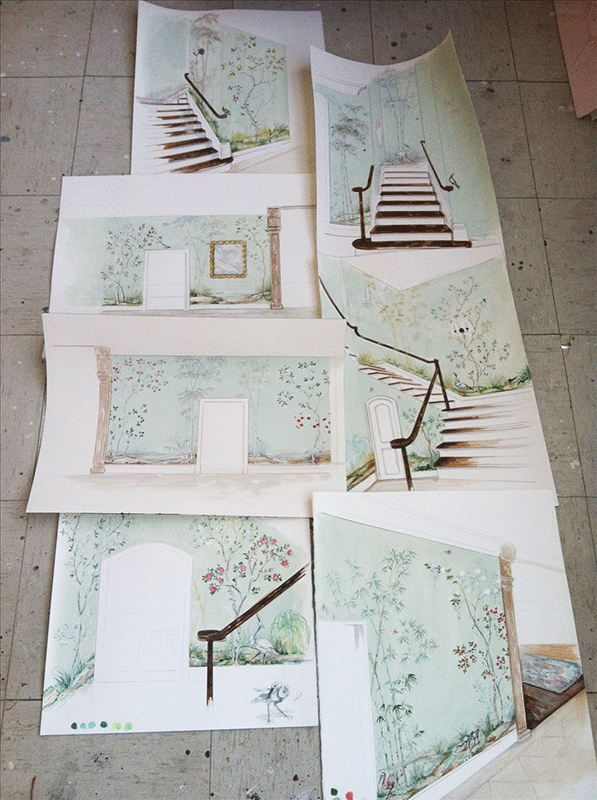Patrick Rouillier: Creative Collaborator


By GINNY VAN ALYEA
The tradition of murals as public art is quite familiar, in fact going back to ancient times when people lived in caves instead of condos, but what might not be as well known is the modern murals that fill walls and spaces of private homes, at once telling personal stories and displaying unique art in one particular place. Residential murals make a very permanent statement and they also must work with spatial and architectural details, making a dramatic, one of a kind contribution to a home.
Patrick Rouillier, a highly respected name in design–savy circles, got his start creating such murals almost 30 years ago, right after graduating from the School of the Art Institute of Chicago. His first full time employment was with a chicago lamp company, doing design and production and developing business skills. Though he learned a great deal, the job meant he was removed from relationships with clients, and he found the repetition of production painting unfulfilling. He resolved to seek work where each project would be important to the specific client.

It was studying scientific illustration at SAIC that fostered Rouillier’s critical eye for looking at objects as well as different periods and painting techniques. He learned to listen to what his professor, and eventually client, wanted to convey through the technical artistic outcome. “It provided me with an employable skill set from the beginning,” he says, “So I began working for and collaborating with designers and clients, listening and translating information objectively into the process of how the materials work, and then executing the artistic expression.”
Beyond the meticulousness required to create personal, time consuming works that are often larger in scale and even executed on site, relationships are part of each project. “I enjoy sharing with the people I work with,” admits Rouillier, “comparing the techniques and the history of the materials, such as gilding, or explaining the steps in creating a painting.” He also savors what he says is the natural process of work and a certain amount of experimentation, or twisting a tradition’s technique.
“I have been fortunate to be educated by the diverse influences of my peers and the people who have employed me over the years. I enjoy being challenged by those various relationships to consider a new way of looking at design or art I may have undervalued or been ignorant of. Every day is a chance to learn something new.”






